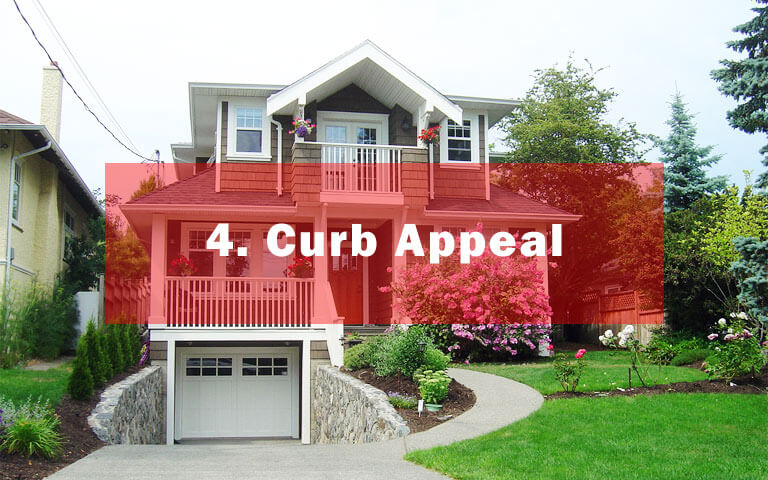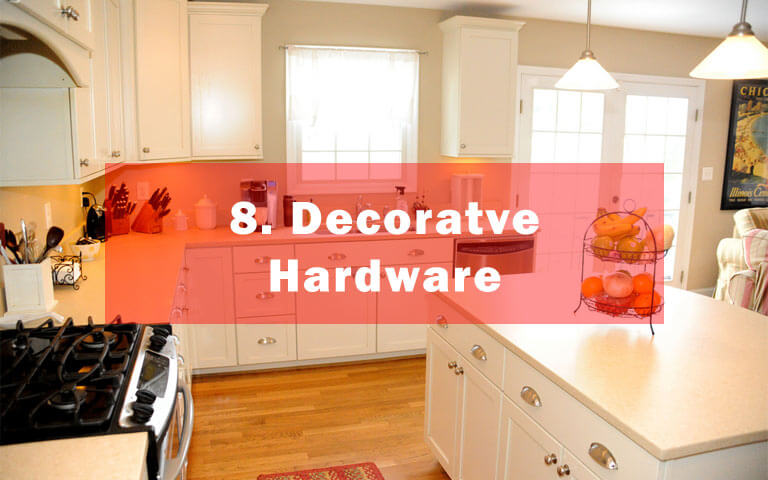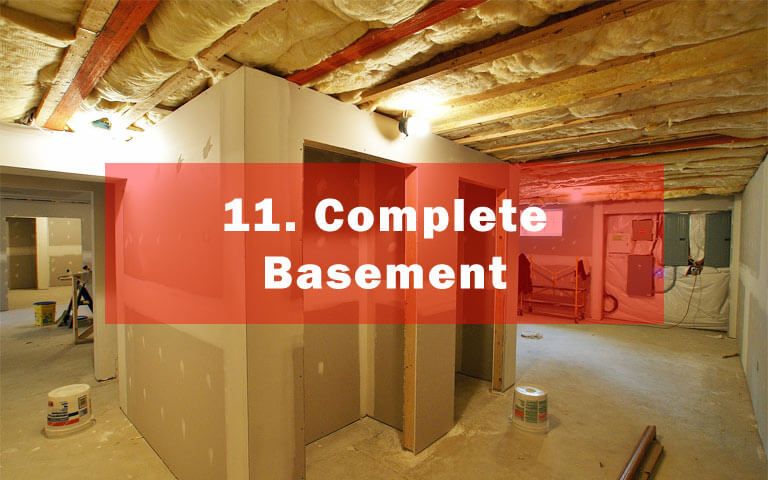Top 11 Home Upgrades that Pay Off (+Bonus Tips)
Selling a home, be it your first or tenth, can be a hassle when it comes to determining your selling price. Credit advisors and financiers know that home buyers are ready to pay up to an average of 16% more if a house has all the modifications that they find important. There are plenty of articles out there that will give you good, bad, and conflicting advice. From building a wood deck to remodeling your garage, adding rooms to tearing down walls; who has it right?
Well, we thought of a couple of good home upgrades that have helped some of us at resale time. BUT we also believe in asking experts before we go willy-nilly with amateur advice. Take it from the experts, and avoid unnecessary upgrades that you might never recover from.
We asked over 30 realty experts for what they have experienced in the world of home realty, design, and architecture. We heard their success stories, failures, and were given great advice. The following is our expert list of top 11 home upgrades that pay off at resale, as well as some bonus tips you can't miss.
1: Kitchen Remodel

When I asked realtors their top upgrades, this was one of the most talked-about. It's also one of the more costly upgrades on this list. Kitchen remodeling is a big deal because it's the most used room in a house. It's where all food is prepped, a gathering place for families, and seen by everyone who visits your home. Susan B. Carroll, a seasoned Baltimore realtor says that "an updated kitchen gives a "wow" factor that many people are looking for because it is the busiest room in the home. New cabinets, counters and appliances are on the more expensive side but a renovated kitchen is "move-in ready" and that's what the busy buyer today is looking for."
If your kitchen is not in need of a total makeover, consider sprucing up with small upgrades such as fresh paint on cabinets. Artist & Designer Pablo Solomon says "in many cases, a thorough cleaning and a coat of paint will go a long way. In a lot of kitchens, removing an island will actually improve things more than adding one. Most buyers are drawn to a kitchen that is not cluttered. New sinks and fixtures are relatively cheap, easy for the DIY, and can make a kitchen look much better."
But how do we determine the value of the remodel? I asked James Ebert, a seasoned appraiser with over 20 years of extensive real estate and appraisal sales, based out of Los Angeles. He says "I generally look at each home and compare them against each other, to estimate what the typical buyer would pay for that remodeled kitchen, bath, or other feature. I am always asked how I figure out the market value of a feature. I think the same thing about Antique Roadshow! How do the appraisers on that show determine that that painting is worth about $3,000? It's a mystery to me! In many markets around here [Los Angeles], it might cost $80,000 to put in a deluxe kitchen. That may only bring a value of about half that in the typical market. What I tell people though, is they get to use that kitchen 3 times a day, for 4-5 years or more! So, they appear to have "Lost" $40,000 in out of pocket costs with the kitchen, when they go to sell it. But let's take those 365 days times five years and then multiply it by three meals a day. That's about 5,500 times they have used that new kitchen, or about $7 per meal. That seems worth it! And if they stay 10 years, the cost per meal is $3.50 to use that shiny new kitchen. And a more modest kitchen, with a $40,000 remodel, would pencil out similarly, at half each of the above numbers." Kitchen usage plays a big role in determining the value of a home.
2: Bathroom Remodel

The second most talked about upgrade is the bathroom. When thinking about less costly ways of updating a bathroom, I immediately think about replacing tiles. Another needed upgrade should be the mirror and lighting. Do you still have that row of 4 to 8 large round bulbs lighting your bathroom? Is your mirror lacking a frame?
Will Johnson, founder of the Sell and Stage Real Estate Team, agrees and says re-grouting tiles in the tub/shower, replacing the toilet seat, or adding a modern frame around the mirror are all great options for relatively affordable upgrades. Rakesh Gupta also agrees. He is a credit advisor and Director at ARG Finance, a real estate consulting firm. He says "bathrooms are private spaces and also one of the determinants of choosing a home. A leaky, outdated shower that is cramped and unappealing can ruin any ambiance created elsewhere in the house too. Try changing the bathroom furniture, updating the fixtures and fittings or adding new tiling or flooring to make a significant difference."
3: Home Staging

Selling a home in today's real estate market is very different than it was just a few years ago. With many properties on the market for buyers to choose from, it is even more important to have your home market ready and differentiated from the competition. Staging your home is a great way to differentiate yourself from the competition. The real estate market is very competitive, so there is no question that a staged home can sell faster and at a higher price than a non-staged one.
I interviewed Wayne Curtis, a licensed real estate agent serving greater Baltimore, about home staging. He brought up a good point: "Sellers have to realize that they are not just selling a home; they are selling an imagined lifestyle. Not how THEY lived in the house, but how they want the buyers to imagine how their lives could be when they are living in the house." I believe home staging is about creating an emotional connection with your buyers. Here's the proof! Wayne Curtis spent about four weeks with a homebuyer on home staging. They removed about 40% of what was in the rooms, then took what remained and moved it around, added a modern art piece to a blank wall in the kitchen, and had a professional photographer come in and shoot the property. His results were almost immediate. They had multiple offers on the first weekend the house was on the market. The photos, posted on the internet, sold the property at list price! Empty houses also need to be staged says Curtis.
The following is another example of his success. "I had a gorgeous home in Fells Point that sat, empty and vacant, listed for six months. Multiple open houses, well attended, but nobody bought it. We staged the house with a top notch stager, held another open house, and it sold immediately. TO A COUPLE WHO HAD BEEN TO ALL MY PREVIOUS OPEN HOUSES! They needed the WOW, they needed to see how the space worked before they felt ready to purchase."
Home staging is not the solution to end all. It may distract from necessary repairs and hide signs of age and distress, but it shouldn't be the only thing you do before resale time. Tracy Kay Griffin is the Lead Designer at Express Homebuyers, a real estate investment company based in Springfield, Virginia. She was the Series Designer for HGTV's "Get It Sold," a Guest Designer for HGTV's "My First Place" and the Lead Stager for Washington DC's premier staging company, Red House Staging & Interiors. She believes that without a doubt, the best investment a home seller can make to their home before placing it on the market is staging. "Whereas most home upgrades address one issue in one room, home staging addresses every issue throughout the entire house! Honestly, there's no better upgrade" says Griffin. She has seen home owners forego kitchen and bathroom renovations, newly finished hardwood floors, new paint and new windows to opt for simply staging the entire house. "Staging is not going to help a home buyer see past a distressed property. But it can help home buyers see past the updates and upgrades that could be done to the house itself."
4: Curb Appeal

Another highly talked about upgrade is the importance of the first impression. "The outside of your house is the first thing potential buyers will see when they get there and the first thing displayed on the listing" says Johnson. "So power wash the outside of your house, trim those hedges, and make sure the grass looks great. Also consider replacing the mailbox or painting your front porch." Pablo Solomon mentions that many people forget that one of the easiest ways to add curb appeal value to your home is to simplify and balance your landscaping. This includes getting rid of the junk. Tear out the rotten deck and replace it with a patio of brick, stone or manufactured blocks. Trim scrubs and trees to open the view from the street, and carefully add or remove plants to give the illusion of a bigger house. The smaller your house, the more of it you should see from the street.
5: HVAC Upgrades & Energy Efficiency
 Think about efficiency upgrades to electric, water, heating, ventilation, and air conditioning systems. This can include: solar panels, programmable thermostats, increased insulation, water efficient toilets, shower heads & faucets, tankless water heaters & energy efficient appliances. DeAnna Radaj is an Eco-Shui designer/rehabber that integrates the Western (eco-friendly, universal, sustainable) and Eastern (Feng Shui) design principles & techniques in her consulting. I asked for her thoughts on what Energy efficient upgrades would be most advantageous. Some of her tips include simple fixes such as double the checkups for HVAC systems. More of her tips inculde:
Think about efficiency upgrades to electric, water, heating, ventilation, and air conditioning systems. This can include: solar panels, programmable thermostats, increased insulation, water efficient toilets, shower heads & faucets, tankless water heaters & energy efficient appliances. DeAnna Radaj is an Eco-Shui designer/rehabber that integrates the Western (eco-friendly, universal, sustainable) and Eastern (Feng Shui) design principles & techniques in her consulting. I asked for her thoughts on what Energy efficient upgrades would be most advantageous. Some of her tips include simple fixes such as double the checkups for HVAC systems. More of her tips inculde:
- Changing out light bulbs/lamps to LED or compact fluorescent
- WaterSense faucets & kitchen/bath fixtures (Kohler is a leader in this category)
- Double glaze windows
- Adding insulation to walls/attics
- Sealing any leaks around doors/windows
- Wrapping ductwork
Doing HVAC upgrades are beneficial on many levels.
- a) Most homeowners will verify what the utility costs are going to be in order to maintain a home before putting in an offer (or they SHOULD!). Showing that home is energy efficient is a HUGE plus for any homeowner.
- b) There are tax advantages to making energy efficient upgrades to your home...& who couldn't use additional deductions, right?
- c) these are THE FIRST items I look at when I'm deciding between homes to purchase: If the home is NOT up-to-date or code compliant it will reflect in the offer I put in to purchase resulting in a much lower price that the seller is looking for, or closer to asking price if these upgrades have been done. Aesthetics are personal (i.e. paint, flooring...) & are part of buying a home.
Radaj says anything that is associated with the "bones" or "maintaining" a home are non-negotiable for her and are always reflected in the offer. "Any home that is energy efficient and code compliant will cost less to run on a monthly/yearly basis, and thusly make it more attainable and affordable to purchase. Most "flippers" only deal w/aesthetics of their "remodels". When I rehab a home, I start with the bones of the house to bring it up to code (including rewiring if electric is not code compliant), and make it energy efficient and accessible using universal design principles. This makes the home more affordable & livable with no hidden, expensive costs that may come up a year or so later in terms of a failing HVAC system, high utility bills or blown electrical system. This was the case in my most recent home I gutted. Electric and plumbing were a nightmare! I had to have the home completely rewired so the fridge could run with another appliance."
Another upgrade the experts mention is solar panel upgrades. Solar panel energy has been a steadily growing trend for years. It might seem expensive at first, but with tax breaks, incentives, and rising energy costs, will pay off in the long run. Andrew Thorry, a spokesperson for the independent consumer advocacy group The Solar Auditor [edit: the group is now named Wise Solar, Inc.], says purchasing solar out right or financing it through the equity in the home can add significant value to a home when it comes time to sell because the home can be net zero electric cost to the new homeowner. Installing a highly efficient, top of the line system to power the home will allow the home to be more energy independent. A great way to present the savings and value to a potential buyer would be to compare the expected production numbers with the solar grid, and what the electric bill would have been without it. There are two ways to add solar power to your home. Purchasing a system upfront, or leasing a system of panels and paying monthly. Thorry says a solar lease does not add value to the home. A purchased solar array with a new roof and having a 200amp panel will add value and provide tax relief. Roofing costs and panel upgrades will also qualify for the 30% tax credit (which has been extended through 2016) if they are needed to install solar.
6: New Windows & Doors

Windows are something almost every room should have, so it's no surprise that upgrading them is on this list. By upgrading your windows with features such as UV protection and winterization, you are adding value to your home. The best time to upgrade your windows is on day one. This upgrade has added energy savings in the long run as well because a high-performance window will keep more heat during the winter and cool air during the summer time. The same concept goes for doors. Consider replacing doors that border your home and the outside world first. These can become unaligned, damaged, and develop air leaks faster than you think. Pablo Solomon suggests putting in floor to ceiling corner windows for an elegant look (budget permitting). He says "floor to ceiling corner windows can make a small house/room look much bigger and can tie the interior with the exterior beautifully--assuming that you have a nice view. While this is structural, it can be a relatively inexpensive project that adds a lot of wow for the money." Windows should not be neglected just because they "look fine". Think of the hidden features and how you can capitalize on them for a more accurate evaluation.
7: New Floors

New floors are a staple in home upgrading. No matter how much you take care of your carpet or wooden floors, there will always be a need to replace them at resale time. This can be due to ordinary wear & tear, outdated styles, or to get rid of signs of pets. This does not have to be an expensive upgrade. With new advancements in flooring, it is becoming easier to do this yourself. A good example that Pablo Solomon brought up is pre-finished hardwood flooring. "People love wooden floors and now that you can buy pre-finished flooring that you can put in yourself very easily, it is a good investment" he says. You can find many different styles with varying levels of gloss, wood types, and sizes in most big-box hardware stores.
8: Decorative Hardware

A must in the kitchen, decorative hardware adds a whole new level of character and style to any room. This is a small upgrade that begs for attention. Decorative hardware includes accessories like pull-out trays, Lazy Susans, cabinet organizers, handles and knobs. Most families spend a TON of time in the kitchen and it's one of the most common things that buyers consider when purchasing. Will Johnson says "Painting your cabinets is a good DIY if you're feeling handy, but if you don't want to delve into that process, even just replacing the cabinet door handles can do wonders. Also consider replacing outdated light fixtures and kitchen faucets. Replace small hardware. This can make the biggest difference. New switch covers, door handles, drawer pulls and door hinges can completely transform the home!"
9: Fresh Coat of Paint

94 percent of all agents recommend a fresh coat of paint for their clients' homes. Re-paint the interior to give it a fresh new look. A fresh coat of paint is necessary if you want the potential buyer to envision what the home might look like when they move in. By removing all personal touches, you've made the home impersonal and easier for the buyer to envision their individual style. Neutral colors are the best choice for this technique. Rakesh Gupta adds a great tip: "whatever you do, take your time looking at paint samples in different lighting all through the day." I would also suggest staying away from wallpaper, as this is considered a personal touch and can be a hassle to remove.
10: Closet Upgrades

There is no such thing as too much closet space. Add more closets before you spend your funds on adding bedrooms and expanding other rooms. Walk-in closets are extremely sought-after in master bedrooms. USA Today reported "a whopping 60% of homeowners were willing to pay extra for a walk-in closet in the master bedroom, with 44% of people between the ages of 35 and 54 viewing this feature as "very important," compared to just 35% under the age of 35 and 36% of people 55 and older." Susan Carroll agrees that adding a closet or adding a closet system will be noticed. "Right now everyone is looking for an open layout. Removing a wall, door, or even relocating or removing an island may make a space feel more open and provide better flow. People want bigger and bigger closets or at least want the smaller closets maximized."
11: Complete Basement

Having a complete basement is a plus at selling time. Generally speaking, we are now in the post-HGTV age. Realtors agree that only a small minority of home buyers are interested in a property that needs major improvements and modernizations. Finishing a basement can get costly if you are adding features like a home theater, wet bar, or home gym. BUT, we aren't doing it for our personal wants and needs. We are looking to increase resale value. I believe waterproofing and insulation is a must. Consider only adding basic room needs like comfortable floors, painted walls, ceilings and trim. I talked to Sheila Boggess from DreamMaker Bath & Kitchen, a national remodeling franchise based in Texas, to get the expert opinion from the people that do basement remodeling projects regularly. When I asked about how they view basement remodeling, she mentions that built-in storage underneath stairs is a must. Sheila went on to say that custom cabinets for storing books or small electronic accessories, new flooring, lighting and accents will bring that old tired space to life. She also brought up a good point about tornados: "If you live in an area prone to tornados, you might also consider adding a safe room with thick walls and no windows into your basement remodeling plan." This remodel is not a costly investment if you stick to the basics.

Advertise Online
This is important now, in the digital age, more than ever. If you are looking to sell your home faster, then placing an ad online is the way to do it. BUT, don't just place an ad and assume you are done. Pictures speak a thousand words. Take many pictures, especially before and after upgrades, to display how ready your home is for purchase. Having at least 30 pictures displaying your home and upgrades is the current average. John Bodrozic tells us "No matter what upgrades are done, having a digital history of the before and after photos, warranties, owner's manuals, and so on, of all your home remodels can be helpful in marketing the home. By displaying the homes' history online, buyers can see what has been done to the home, and it helps build confidence with the buyers. It can also help sellers compete with other similar homes in the neighborhood." John Bodrozic is a co-founder of HomeZada, an online software provider that helps consumers manage their home remodel projects as well as market their property online. John was previously the co-founder of Meridian Systems, a leading construction project management software solution.
Location, Location, Location
To New York Real estate agent Brett Ringelheim, "location is the most important thing when it comes to reselling a home. Location is important because when an agent does comps [comparative sales, or process of determining the value of your house] they are looking for information on the homes that sold in the immediate area. So comps are the homes for sale or that have sold next door, down the block or a few blocks over." In short, your list price and price per square foot is determined greatly by the value of other homes in the immediate area. This is why location plays a big role in cities, and other highly populated areas.
We know that it's not as easy as moving your house to a more valuable area to increase resale value, but knowing how much your neighbors homes are valued at will help you avoid overvaluing, as well as undervaluing, your property. Brett Ringelheim has a great example of this: "Right now there is a home that is asking for 2.3 million and the home is beautiful it is on 3 lots and is literally the biggest house within a 3 block radius. The only problem is the homes in the immediate location are selling at a much lower value. The home for 2.3 million is asking $240/per square feet. While all the homes within immediate radius are much smaller square footage and are only asking for an average of $175/ per square foot. But if you were to look at a similar size home of the 2.3 million around 10-15 blocks away the homes are selling for around $200/ per square feet in the same exact town. So, it will always come back to location. The $2.3 million home is beautiful and different than all the homes in the immediate area but the comps of the homes in the immediate area are asking a much lower price per square foot."
In a nutshell, avoid going overboard with upgrades and keep things simple with the buyer in mind. Start with small, needed fixes because those are what count the most! Find us on Facebook By: Luis Leonzo
